
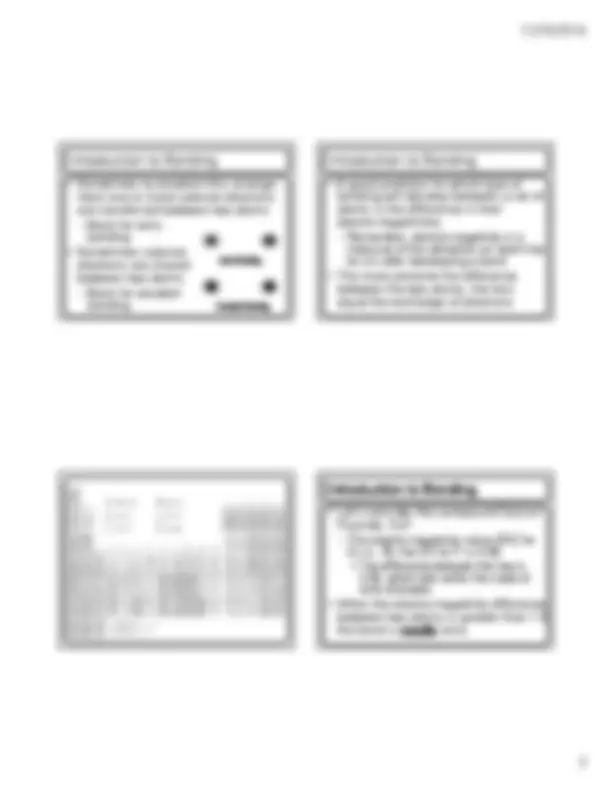
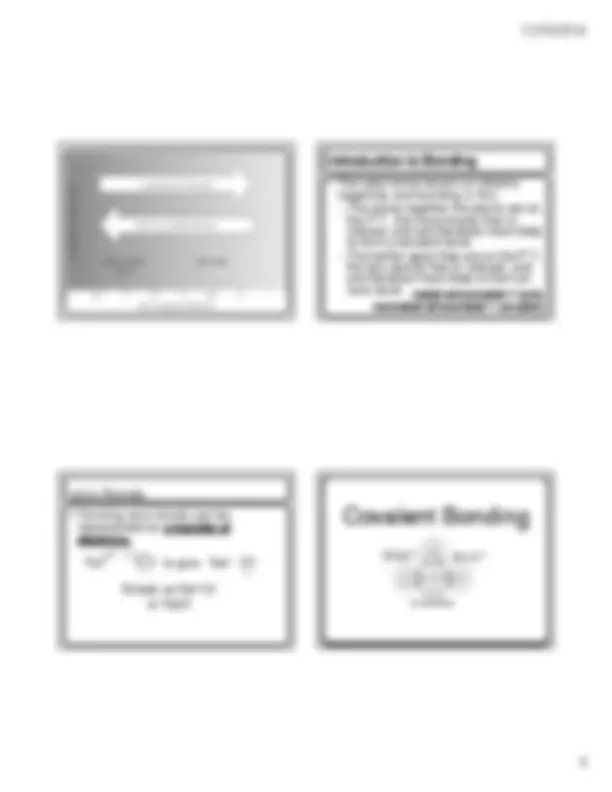
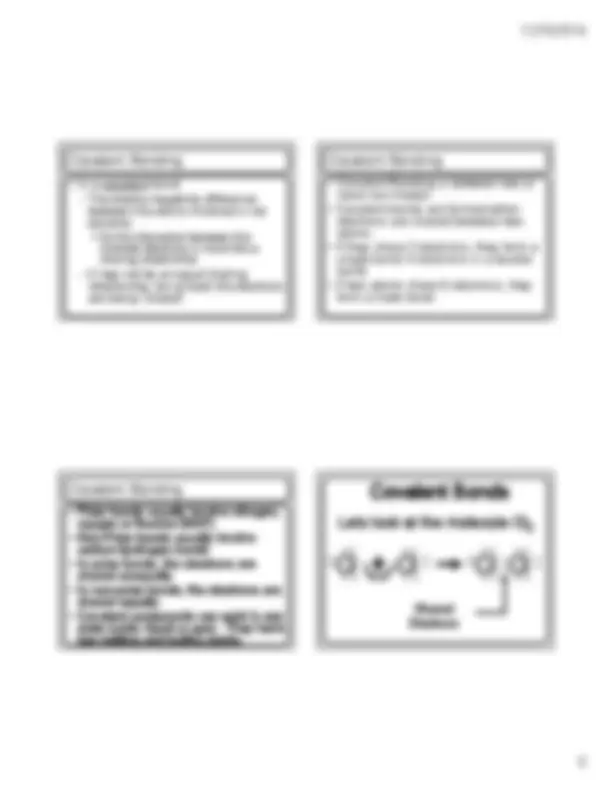
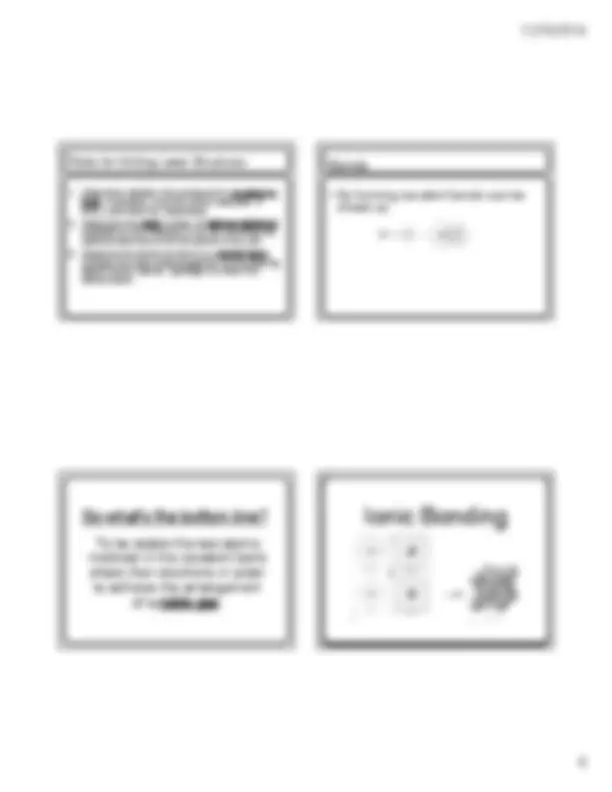
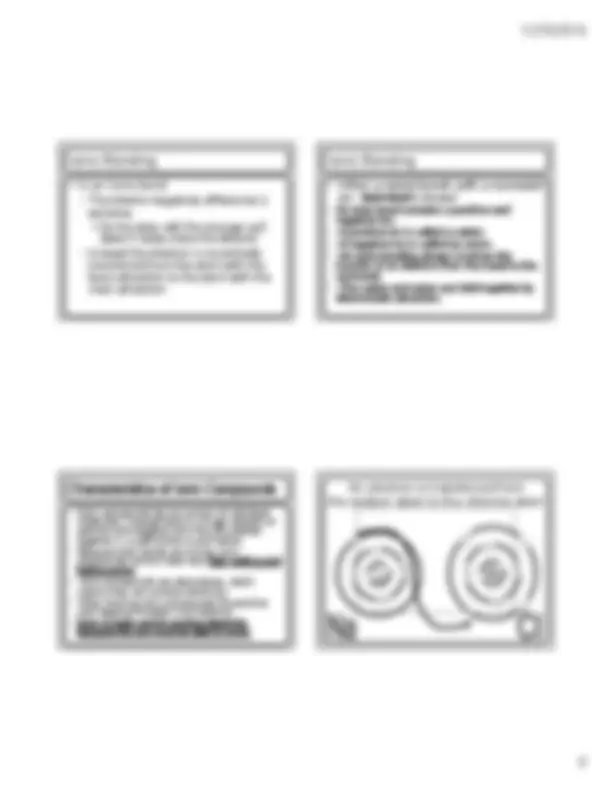
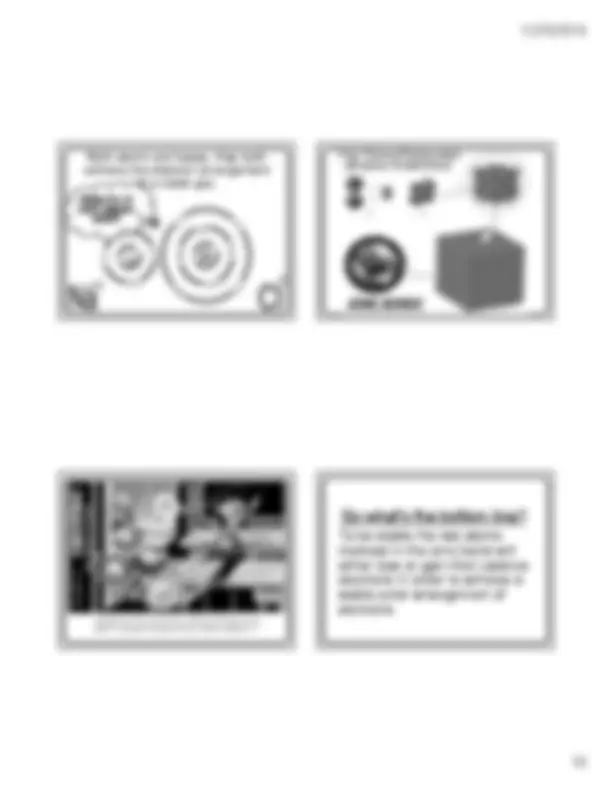


Study with the several resources on Docsity

Earn points by helping other students or get them with a premium plan


Prepare for your exams
Study with the several resources on Docsity

Earn points to download
Earn points by helping other students or get them with a premium plan
Community
Ask the community for help and clear up your study doubts
Discover the best universities in your country according to Docsity users
Free resources
Download our free guides on studying techniques, anxiety management strategies, and thesis advice from Docsity tutors
An introduction to chemical bonding, discussing the different types of bonds including ionic, covalent, and metallic bonds. It covers the philosophies of atom to atom interaction, the role of electro-negativity, and the formation of bonds between different elements. It also includes examples and illustrations.
Typology: Study notes
1 / 12

This page cannot be seen from the preview
Don't miss anything!







Mr. BuchananMr. Buchanan
Lets look at the molecule ClLets look at the molecule Cl (^2 )
Shared Electrons
Shared Electrons
Valence electrons for ElementsValence electrons for Elements
Recall that the valence electrons for the elements can be determined based on the elements position on the periodic table. Examples of Lewis Dot Symbol
Recall that the valence electrons for the elements can be determined based on the elements position on the periodic table. Examples of Lewis Dot Symbol
Valence electrons and number of bondsValence electrons and number of bonds Number of bonds element can form depends on the number of valence electrons. Number of bonds element can form depends on the number of valence electrons.
X
Fam i l y (^) # C ov al en t Bon d s* H al ogen s F, B r, C l , I C al cogen s O , S N i tr ogen N , P C arb on C , Si
O
N
C
1 bond often
2 bond often
3 bond often
4 bond always The above chart is a guide on the number of bonds formed by these atoms.
In general -
BondsBonds
4 bonds 3 bonds 2 bonds 1 bond O=C=O NN O = O :F – F:
4 bonds 3 bonds 2 bonds 1 bond O=C=O ::NN :: O = O :F – F:::
Rules for Writing Lewis StructuresRules for Writing Lewis Structures
**-
-
Notice 8 e -^ in each valence shell!!!
Both atoms are happy, they both achieve the electron arrangement of a noble gas.
Both atoms are happy, they both achieve the electron arrangement of a noble gas.
Very Strong Electrostatic attraction established…
IONIC BONDS
So what’s the bottom line?